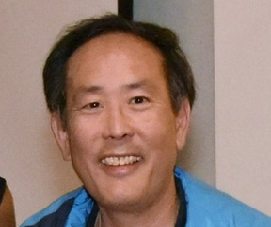Course Overview
Wednesday, July 13: Build, Share and Run Applications by Containerizing with Docker
12:30PM - 2:30PM EST (including Q & A)
Build, Share and Run Applications by Containerizing with Docker
The talk provides a general introduction to the motivation and architecture of containers and Docker. Containers are built from images and represent the fundamental building blocks of Docker. The talk discusses how to create, build, run and remove containers and images, and presents of overview of Docker storage and networking.
- What is Docker?
- Containers
- Introduction
- Benefits
- Containers
- Introduction
- List
- Start/stop/pause/unpause
- Remove
- Images
- Docker Hub
- Dockerfile
- Create and run
- Remove
- Docker Storage overview
- Docker Networking overview
Thursday, July 28: Kubernetes Storage
12:30PM - 2:30PM EST (including Q & A)
Kubernetes Storage
Kubernetes has a wide range of different volume types for providing persistent and temporary storage. This module surveys the major volume types, with a detailed discussion of local and host path volumes. The module concludes by showing how to use persistent volumes by defining a Persistent Volume (PV), a Persistent Volume Claim (PVC), and a Pod that uses the PVC to request storage, and how to delete PVs and PVCs.
- Persistent volumes
- Persistent volume (PV)
- Persistent volume claim (PVC)
- Pods
- Binding
- Volume types
- Local
- Host path
- Deleting PVs and PVCs
Wednesday, August 10: AKS & DevOps
12:30PM - 2:30PM EST (including Q & A)
AKS and DevOps
Modern software development best practices mandate the use of a CI/CD solution. Azure DevOps provides the requisite support for the critical parts of the software development process, from planning to building to deploying applications. This module shows how to use Azure DevOps in conjunction with AKS. Specifically, it discusses how to create a CI/CD pipeline that pushes an updated image to the ACR every time a GIT code repo is modified and that deploys the changes to AKS.
- Create an Azure pipeline
- Integrate the ACR with an Azure pipeline
- Build/Push a Docker image
- Deploy an application
- Integrate AKS with an Azure pipeline
Presenter: Dr. Ronald A. Sumida

Ron has been working with Microsoft technologies for over 25 years. He began his Windows software development career with user interface programming in the Win16 API on Windows 3.1, continued through the Win32 era, working on both user interfaces and operating system services, and then spent five years working with COM. For the past 15 years, he has primarily been working with .NET related technologies. Given the rise of JavaScript UI Frameworks, Ron has also been working extensively with Javascript, Typescript, HTML5, Angular and React. In recent years, he has been focusing on Azure technologies, with an emphasis on AI/machine learning and AD B2C. He has also been embracing open source technologies, having recently authored a class in Docker and Kubernetes.
He still has a passion for user interfaces, having also authored a course on Windows Forms and having taught courses in WPF, Silverlight, Expression Blend and ASP.NET WebForms and MVC. Dr. Sumida also is passionate about multithreaded programming, having worked extensively with threads from the days of Win32 through the current versions of .NET. Ron is also an early adopter and course author for .NET Core/5.0. He teaches a wide range of other .NET related topics, including (but not limited to): C#, Linq, What’s New in .NET, WCF, Windows Workflow, Advanced .NET, debugging, entity framework, web programming, Azure, and Artificial Intelligence and Machine Learning.
He received his PhD in Artificial Intelligence from UCLA, where he conducted research on applying neural networks to problems in natural language processing (NLP). Dr. Sumida has spoken at a number of AI and Neural Network conferences, including the Conference of the Cognitive Science Society (CogSci), the International Joint Conference on Artificial Intelligence (IJCAI) and the Conference on Neural Information Processing Systems (NIPS). He was a Teaching Associate at the UCLA Computer Science Department, where he presented weekly lectures on LISP, MS-DOS, Artificial Intelligence, and Natural Language Processing, and provided students with assistance on programming projects. His dissertation involved integrating the best features of symbolic and neural network approaches to NLP.